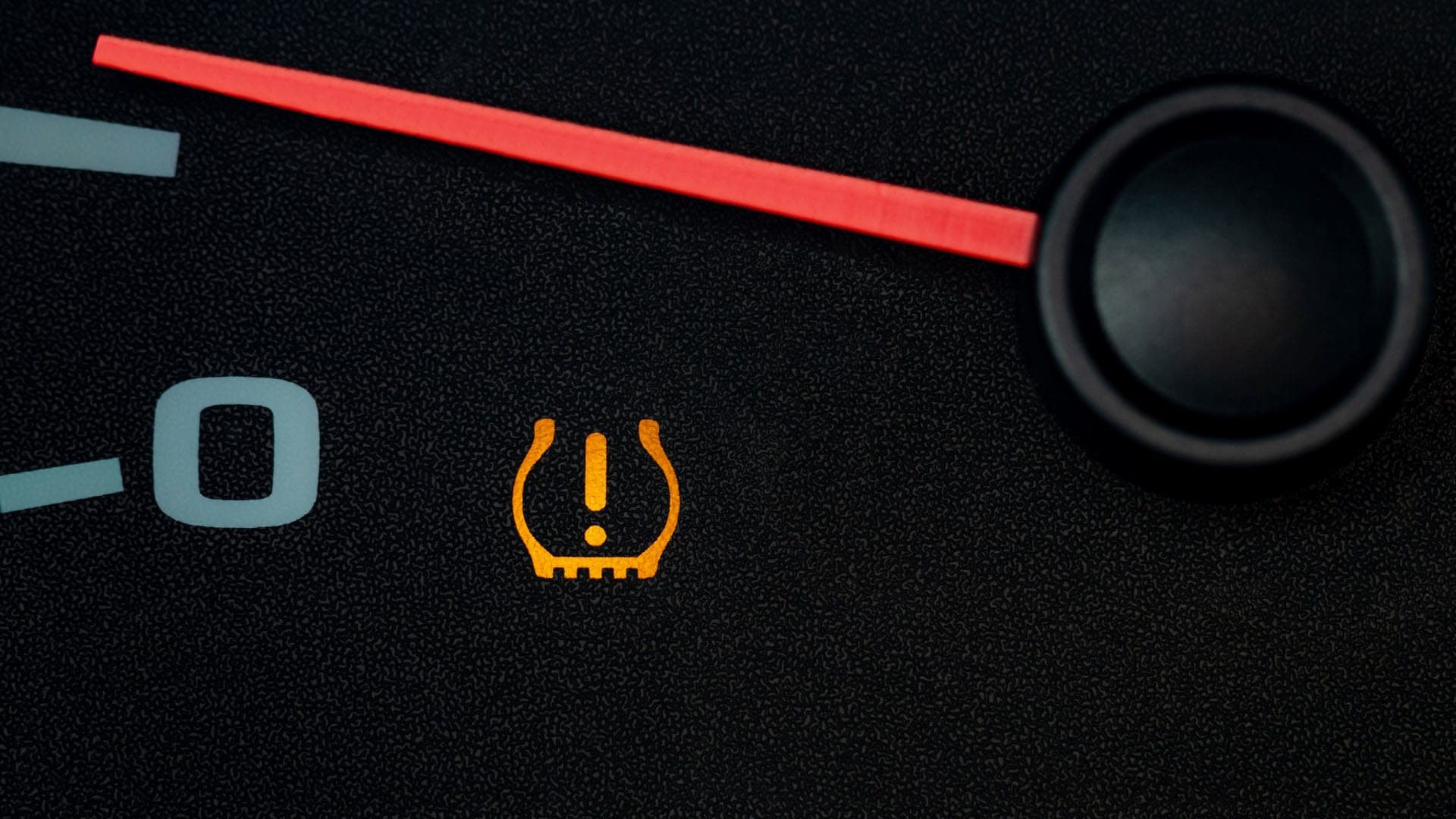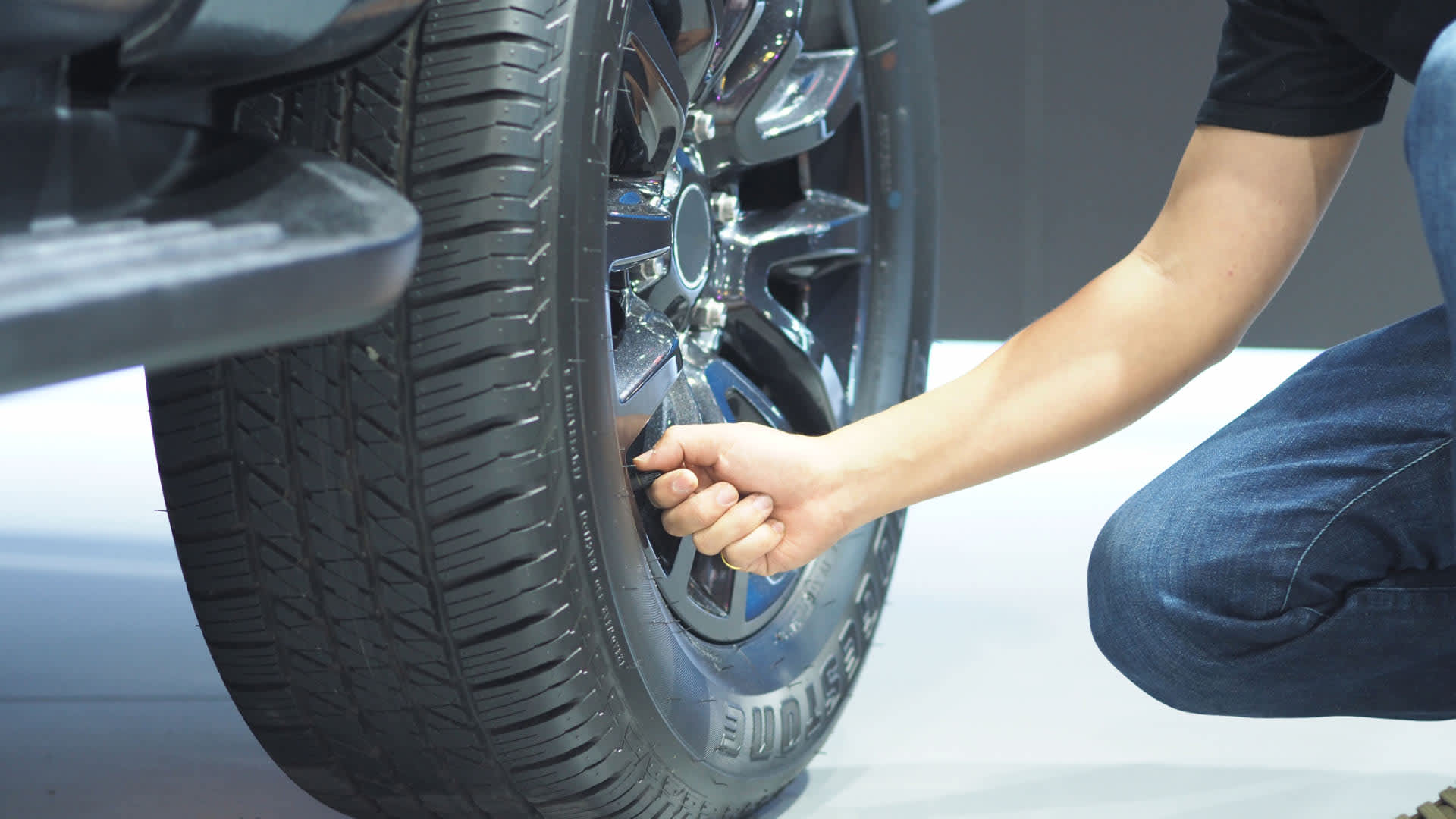Tire Buying Guides
Best price guarantee
Tire replacement coverage
24/7 roadside assistance
Easy returns

The tire pressure light illuminating on your dashboard can be unsettling, especially if you're unsure what it means or how to address it. However, understanding the purpose of this warning light and knowing the proper steps to take can help you maintain your vehicle's safety and performance.
This light, also known as the TPMS (Tire Pressure Monitoring System) light, is designed to alert you when one or more of your tires are underinflated. Driving with underinflated tires can lead to decreased fuel efficiency, premature tire wear, and even dangerous situations like tire blowouts.
By familiarizing yourself with the tire pressure light and learning how to respond appropriately, you can ensure a safer, more comfortable driving experience while extending the life of your tires. In this article, we'll explore what the tire pressure light means and provide step-by-step guidance on what to do when it appears on your dashboard.
What is a Tire Pressure Light?
A tire pressure light, also known as a TPMS light, is a dashboard indicator that alerts you when one or more of your tires are underinflated. This system helps ensure your tires are properly inflated for optimal safety and performance.
The TPMS uses sensors mounted inside each tire to monitor air pressure levels. When the pressure in one or more tires drops below a predetermined threshold—typically 25% below the manufacturer's recommended pressure—the system triggers the warning light on your dashboard.
It's important to note that the TPMS light is not a substitute for regularly checking your tire pressure manually. The light only illuminates when the pressure has dropped significantly, meaning your tires may have been underinflated for some time before the alert appears. To maintain proper tire pressure and prevent premature wear, it's recommended to check your tire pressure at least once a month using a reliable tire pressure gauge.
How to Respond to a Tire Pressure Light

When the tire pressure light activates, it indicates a potential issue with the air levels in your tires. Addressing this alert promptly is key to maintaining both safety and performance. Start by finding a secure location to park your vehicle, which allows you to examine the situation calmly and without interference.
Check Your Tire Pressure
Once parked, use a tire pressure gauge to check each tire's pressure. This tool helps you get precise readings, allowing you to identify any tires that may be underinflated. Compare these readings to the recommended psi on the driver’s side door panel. If you find any tire with low pressure, inflate it to the suggested level. Proper inflation ensures better handling and extends the life of your tires.
Inspect for Visible Damage
With the pressure adjusted, take a moment to visually inspect your tires for any obvious damage. Focus on finding punctures, tears, or foreign objects like nails lodged in the tread. If you notice any issues, it’s advisable to seek guidance from a tire expert to determine if a repair or replacement is needed. Promptly solving these problems helps avoid further complications and ensures safety.
Reset the Tire Pressure Light
After ensuring your tires are properly inflated and free of damage, drive your vehicle for a short distance to see if the tire pressure light turns off. If it stays on, consult your vehicle’s manual for instructions on how to reset the system. A flashing light could indicate a problem with the sensor, which may need professional attention to fix. Keeping the system operational ensures timely alerts for any tire-related issues.
1. Check Your Tire Pressure
Ensuring your tire pressure is at the optimal level is essential for safe driving and maximizing tire lifespan. Start by acquiring a reliable tire pressure gauge—this tool provides the accuracy needed to evaluate each tire’s condition.
To use the gauge effectively, align it carefully with the valve stem and apply steady pressure to get a true reading. This step helps in identifying any inconsistencies in tire pressure. Verify the readings against the manufacturer’s recommended psi, which you can find on the driver’s side door jamb or in your vehicle’s manual.
Should any tire fall below the recommended psi, it's important to address it promptly. Utilize air stations, often available at service centers, to refill your tires to the required levels. Regularly maintaining the correct air pressure not only enhances driving safety but also contributes to improved fuel efficiency and tire durability, making this a worthwhile practice as part of your routine vehicle care.
2. Inspect for Visible Damage
Evaluating your tires for any discernible harm plays a crucial role in safeguarding your driving experience. Start by giving each tire a thorough once-over, watching for any abnormalities like uneven wear or surface irregularities. Pay attention to areas where the tread might appear unusually shallow or the sidewalls show signs of distress.
Examine for Foreign Objects
Focus on identifying any foreign materials, such as sharp objects, that might be embedded in the tread. These can lead to gradual air loss or potential tire failure. If you encounter debris that appears to have pierced the tire, consider leaving it undisturbed and consult a tire specialist who can assess whether a repair is feasible or if more extensive action is needed.
Consult Tire Specialists
When any issues arise during your inspection, reaching out to a tire service professional is advisable. These experts can provide a comprehensive evaluation and suggest optimal solutions, whether it involves a simple patch or a full tire replacement. Engaging with professionals ensures that your tires remain in top condition, enhancing both safety and performance on the road.
3. Reset the Tire Pressure Light
After confirming your tires are properly inflated and undamaged, the tire pressure light requires attention. Begin by taking your vehicle on a short drive, as this can prompt the system to recognize the corrected pressure levels and deactivate the light. Such a process allows the vehicle's system to recalibrate itself, often resolving the issue without further intervention.
If the light persists, it's crucial to explore the specific reset procedures detailed in your vehicle’s owner’s manual. Vehicles often vary in their reset methods, which might involve using dashboard controls or specific sequences to reset the TPMS manually. Following these steps precisely ensures the system will continue to function correctly, alerting you to any future tire pressure concerns.
In the event of a flashing light, this usually signals a deeper issue with the tire pressure monitoring system. A flashing indicator often points to sensor malfunctions, such as low sensor battery or communication errors between the sensor and the vehicle’s onboard computer. Consulting with a professional technician or visiting a tire service center can provide a thorough diagnosis and solution, keeping your TPMS reliable for ongoing vehicle safety.
4. Monitor Tire Pressure Regularly
Incorporating regular tire pressure checks into your routine is essential for ensuring your vehicle's safety and performance. Performing these checks on a monthly basis allows you to identify any slow leaks or pressure inconsistencies before they become significant problems. Keeping tire pressure within the recommended range optimizes fuel efficiency, handling, and overall tire longevity.
React to Temperature Variations
Temperature changes affect tire pressure, making it crucial to adjust as needed. For every 10-degree Fahrenheit drop in temperature, tires can lose approximately 1 psi. During colder seasons, conduct more frequent checks to ensure your tires are adequately inflated. This proactive approach helps maintain optimal tire performance despite environmental shifts.
Advantages of Consistent Monitoring
Regular tire pressure checks offer numerous benefits beyond immediate safety. Proper inflation minimizes uneven tread wear, extending the lifespan of your tires. By maintaining the correct pressure, you ensure that your tires perform consistently in various conditions, reducing the risk of accidents. This routine maintenance preserves tire integrity and enhances your driving experience.
Tips on Maintaining Proper Tire Pressure

Keeping tire pressure at optimal levels requires some practical strategies. These tips will help ensure your tires are always ready for the road.
1. Invest in a Reliable Tire Pressure Tool
Having a dependable tool to measure tire pressure is essential for maintaining accuracy. Consider using a digital tire inflator that combines a gauge with an air pump for convenience. These devices offer precise readings and can inflate tires to the exact pressure needed. By choosing a tool that combines functionality with accuracy, you streamline the process of checking and adjusting tire pressure.
2. Familiarize Yourself with TPMS Alerts
Gain a deeper understanding of your vehicle’s Tire Pressure Monitoring System (TPMS) by consulting your owner's manual or a vehicle specialist. Learn the specific alert patterns and what each signal indicates about your tire health. This knowledge enables you to act swiftly and appropriately when the system sends a warning. Being well-informed about your TPMS helps ensure you utilize this technology effectively to maintain optimal tire conditions.
3. Conduct Thorough Tire Assessments
Incorporate a comprehensive evaluation of your tires into your regular vehicle maintenance routine. Focus on detecting any irregularities in tread patterns that might suggest alignment or balance issues. Additionally, examine the tire sidewalls for any signs of damage, such as bulges or cracks, which could indicate potential hazards. By adopting a proactive approach to tire assessments, you can address concerns before they lead to more significant issues, enhancing both safety and performance on the road.
By staying vigilant about your tire pressure and taking prompt action when the TPMS light illuminates, you can ensure a safer, more efficient driving experience. Remember, your tires are the only point of contact between your vehicle and the road, so prioritizing their maintenance is crucial. When it's time to replace your tires, we at SimpleTire are here to help you find the perfect set at the best prices, so you can get back on the road with confidence.
Ready to find the perfect tires?
Search By